


 To Rosemary Stimola, my little flower, with gratitude and love D. A.
To Rosemary Stimola, my little flower, with gratitude and love D. A.
To Sophie Grace, the sweetest little sprout in Nanas garden S. L. Text 2007 by Dianna Hutts Aston.
Illustrations 2007 by Sylvia Long.
All rights reserved. Book design by Sara Gillingham and Katie Jennings.
Calligraphy by Anne Robin.
The illustrations in this book were rendered in ink and watercolor. cm.
ISBN-13: 978-0-8118-5520-4
ISBN-10: 0-8118-5520-1
1. cm.
ISBN-13: 978-0-8118-5520-4
ISBN-10: 0-8118-5520-1
1.
SeedsJuvenile literature. I. Long, Sylvia, ill. II. Title.
QK661.A88 2007
581.467dc22
2006013302 Chronicle Books LLC
680 Second Street, San Francisco, California 94107 www.chroniclekids.com ACKNOWLEDGMENTS: Victoria Rock, editor, and Sara Gillingham, book designer, for their incomparable vision and dedication to quality in childrens books. Robert T. Robert T.
Harms, University of Texas at Austin; Dr. Gerhard Leubner, University of Freiburg, Germany; Dr. Sarah Sallon, Natural Medicine Research Center, Jerusalem, Israel; Carissa Nelson, Seed Technology Education Program, Colorado State University; Deborah Lewis, Ada Hayden Herbarium, Iowa State University, Ames, Iowa; Steven Hurst, USDA-NRCA Plants Database; Matthew Sleigh, B and T World Seeds, Paguignan, France; Megan Waters; Dr. Thomas L. Carlisle; Susette Newberry, PhD, Carl A. H. H.
Bailey Hortorium Herbarium, Cornell University (coco de mer image permission); Guy Eisner (date palm seed image); Deborah Weist, National Park Service (redwood cones and seed images); Jo Cook, Urban Horticulture, University of Arizona; Allan McDonald, British Columbia; Malcolm Storey, United Kingdom A seed is sleepy. It lies there, tucked inside its flower, on its cone, or beneath the soil. Snug. Still.A seed is secretive.
It lies there, tucked inside its flower, on its cone, or beneath the soil. Snug. Still.A seed is secretive. It does not reveal itself too quickly. Most seeds sleep through a season or two, waiting for the warmer temperatures of spring. But some take their time. Ten years might pass before the bright red-orange seed of the Texas mountain laurel shows its purple blooms. A seed is fruitful.
It does not reveal itself too quickly. Most seeds sleep through a season or two, waiting for the warmer temperatures of spring. But some take their time. Ten years might pass before the bright red-orange seed of the Texas mountain laurel shows its purple blooms. A seed is fruitful. Ninety percent of the plants on Earth are flowering plants.
Ninety percent of the plants on Earth are flowering plants.
Flowering plants produce fruitsfruits of all shapes and textures that keep the seeds cozy until they have found the right place to grow. A seed is naked. Yes, naked Scientists call gymnospermsseeds that arent clothed in fruitsnaked seeds. Most naked seeds hide themselves on the scales of cones until theyre ready to make a dash for the ground. Who would guess that a seed as small as a freckle would grow into the worlds tallest tree? Only ten percent of redwood trees begin as seeds, though. Most redwood trees spring from existing trees. Seeds come in many sizes.
Yes, naked Scientists call gymnospermsseeds that arent clothed in fruitsnaked seeds. Most naked seeds hide themselves on the scales of cones until theyre ready to make a dash for the ground. Who would guess that a seed as small as a freckle would grow into the worlds tallest tree? Only ten percent of redwood trees begin as seeds, though. Most redwood trees spring from existing trees. Seeds come in many sizes. The orchid seed is the smallest of all.
The orchid seed is the smallest of all.
There might be a million seeds in one pod! The seed of the coco de mer palm is the largest. It can weigh up to 60 pounds. A seed is adventurous. It must strike out on its own, in search of a less crowded place to put down roots.
It must strike out on its own, in search of a less crowded place to put down roots. Drift seeds float on ocean currents, from one shore to anotherThey have enough air inside to help them float,and their thick, protective shells keep out seawater.A seed is inventive.
Drift seeds float on ocean currents, from one shore to anotherThey have enough air inside to help them float,and their thick, protective shells keep out seawater.A seed is inventive.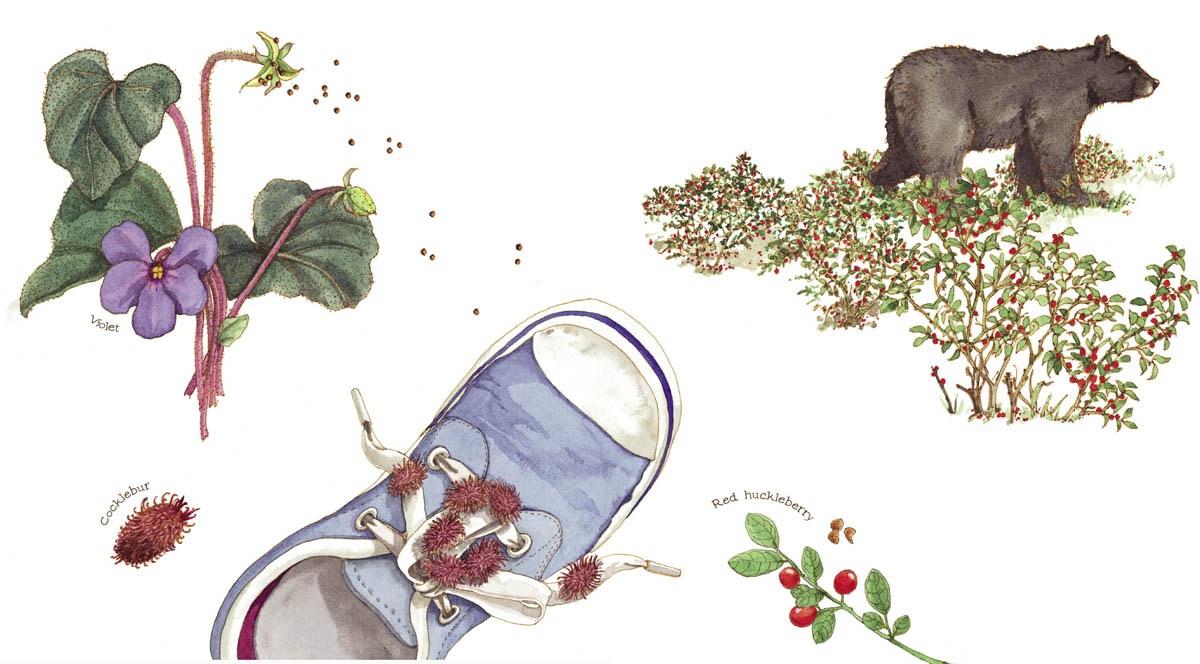 To find a spot to grow, a seed might leap from its pod,or cling to a childs shoestring,or tumble through a bears belly.A seed hopes to land where there is plenty of sunlight, soil, and water.A seed is generous.It gives the baby plant, or embryo, a seed coat to keep it warm.
To find a spot to grow, a seed might leap from its pod,or cling to a childs shoestring,or tumble through a bears belly.A seed hopes to land where there is plenty of sunlight, soil, and water.A seed is generous.It gives the baby plant, or embryo, a seed coat to keep it warm. The embryos first meal comes from its seed, leaves, or cotyledons. Seeds with one seed leaf, like corn, are called monocots. Seeds with two seed leaves, like beans, are called dicots.
The embryos first meal comes from its seed, leaves, or cotyledons. Seeds with one seed leaf, like corn, are called monocots. Seeds with two seed leaves, like beans, are called dicots. 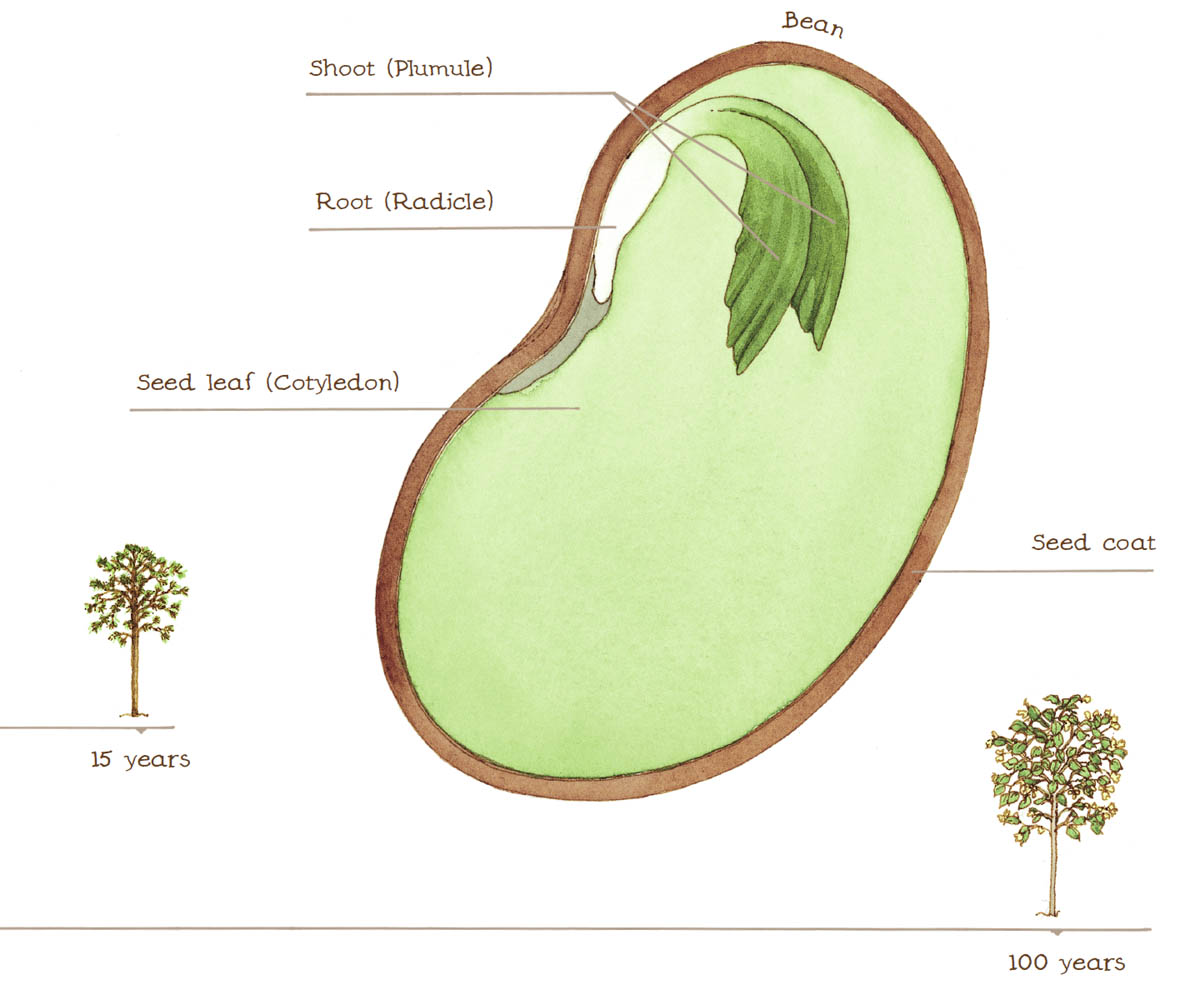 Some seeds are ancient.
Some seeds are ancient. Not all seeds are eager to germinate.
Not all seeds are eager to germinate.
Some have lain dormant, or slept undisturbed, for more than a thousand years. The oldest known seed to sprout came from an extinct date palm tree. After it was unearthed from a long-ago kings mountaintop palace in Israel, a scientist planted it. Four weeks later, it sprouted! A seed is thirsty... and hungry. Part of the seed, the root, feels the tug of gravity and digs down deep. Once a seed has shed its coat, it drinks in the rain, the dew, and yesterdays icicles.
Part of the seed, the root, feels the tug of gravity and digs down deep. Once a seed has shed its coat, it drinks in the rain, the dew, and yesterdays icicles.
It feasts on minerals in the soil. Another part of the seed, the shoot, is sensitive to light, so it reaches for the sun. A seed is clever.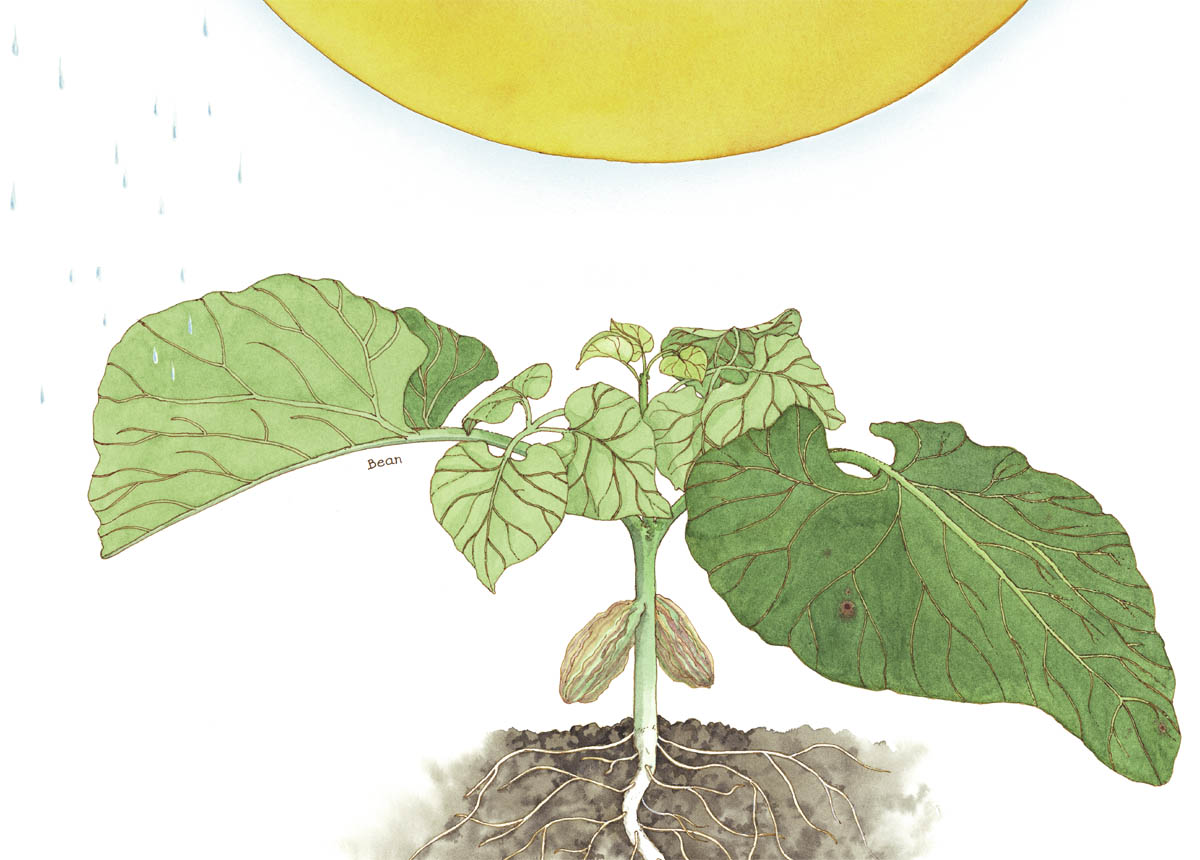 Plants make their own food through a process called photosynthesis. Inside plant leaves are cells containing chemicals that absorb sunlight. Light gives them the energy they need to turn water and carbon dioxidea gas in the airinto food. It knows to seek the sunlight... to push itself up, up, through the soil.
Plants make their own food through a process called photosynthesis. Inside plant leaves are cells containing chemicals that absorb sunlight. Light gives them the energy they need to turn water and carbon dioxidea gas in the airinto food. It knows to seek the sunlight... to push itself up, up, through the soil.
But it must wait awhile before that happens.A seed is sleepy,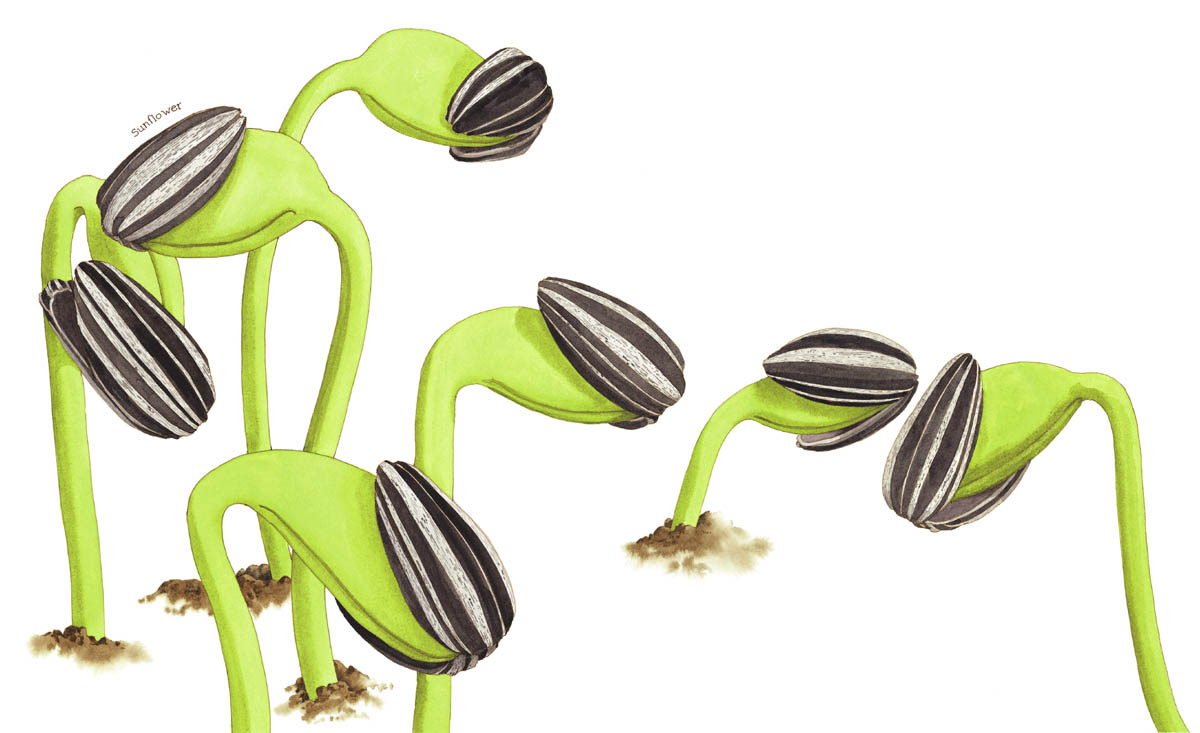
Next page

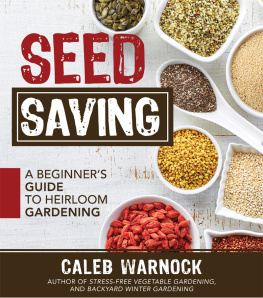
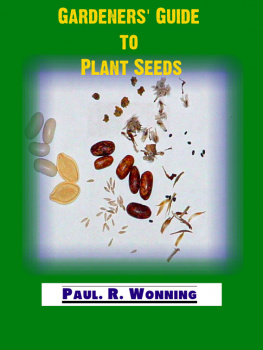
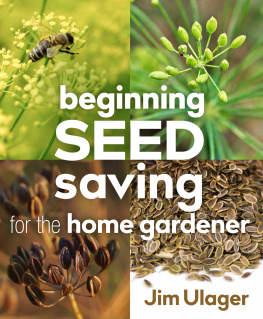

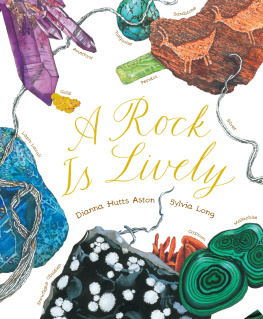




 To Rosemary Stimola, my little flower, with gratitude and love D. A.
To Rosemary Stimola, my little flower, with gratitude and love D. A. It lies there, tucked inside its flower, on its cone, or beneath the soil. Snug. Still.A seed is secretive.
It lies there, tucked inside its flower, on its cone, or beneath the soil. Snug. Still.A seed is secretive. It does not reveal itself too quickly. Most seeds sleep through a season or two, waiting for the warmer temperatures of spring. But some take their time. Ten years might pass before the bright red-orange seed of the Texas mountain laurel shows its purple blooms. A seed is fruitful.
It does not reveal itself too quickly. Most seeds sleep through a season or two, waiting for the warmer temperatures of spring. But some take their time. Ten years might pass before the bright red-orange seed of the Texas mountain laurel shows its purple blooms. A seed is fruitful. Ninety percent of the plants on Earth are flowering plants.
Ninety percent of the plants on Earth are flowering plants. Yes, naked Scientists call gymnospermsseeds that arent clothed in fruitsnaked seeds. Most naked seeds hide themselves on the scales of cones until theyre ready to make a dash for the ground. Who would guess that a seed as small as a freckle would grow into the worlds tallest tree? Only ten percent of redwood trees begin as seeds, though. Most redwood trees spring from existing trees. Seeds come in many sizes.
Yes, naked Scientists call gymnospermsseeds that arent clothed in fruitsnaked seeds. Most naked seeds hide themselves on the scales of cones until theyre ready to make a dash for the ground. Who would guess that a seed as small as a freckle would grow into the worlds tallest tree? Only ten percent of redwood trees begin as seeds, though. Most redwood trees spring from existing trees. Seeds come in many sizes. The orchid seed is the smallest of all.
The orchid seed is the smallest of all. It must strike out on its own, in search of a less crowded place to put down roots.
It must strike out on its own, in search of a less crowded place to put down roots. Drift seeds float on ocean currents, from one shore to anotherThey have enough air inside to help them float,and their thick, protective shells keep out seawater.A seed is inventive.
Drift seeds float on ocean currents, from one shore to anotherThey have enough air inside to help them float,and their thick, protective shells keep out seawater.A seed is inventive. To find a spot to grow, a seed might leap from its pod,or cling to a childs shoestring,or tumble through a bears belly.A seed hopes to land where there is plenty of sunlight, soil, and water.A seed is generous.It gives the baby plant, or embryo, a seed coat to keep it warm.
To find a spot to grow, a seed might leap from its pod,or cling to a childs shoestring,or tumble through a bears belly.A seed hopes to land where there is plenty of sunlight, soil, and water.A seed is generous.It gives the baby plant, or embryo, a seed coat to keep it warm. The embryos first meal comes from its seed, leaves, or cotyledons. Seeds with one seed leaf, like corn, are called monocots. Seeds with two seed leaves, like beans, are called dicots.
The embryos first meal comes from its seed, leaves, or cotyledons. Seeds with one seed leaf, like corn, are called monocots. Seeds with two seed leaves, like beans, are called dicots.  Some seeds are ancient.
Some seeds are ancient. Not all seeds are eager to germinate.
Not all seeds are eager to germinate. Part of the seed, the root, feels the tug of gravity and digs down deep. Once a seed has shed its coat, it drinks in the rain, the dew, and yesterdays icicles.
Part of the seed, the root, feels the tug of gravity and digs down deep. Once a seed has shed its coat, it drinks in the rain, the dew, and yesterdays icicles. Plants make their own food through a process called photosynthesis. Inside plant leaves are cells containing chemicals that absorb sunlight. Light gives them the energy they need to turn water and carbon dioxidea gas in the airinto food. It knows to seek the sunlight... to push itself up, up, through the soil.
Plants make their own food through a process called photosynthesis. Inside plant leaves are cells containing chemicals that absorb sunlight. Light gives them the energy they need to turn water and carbon dioxidea gas in the airinto food. It knows to seek the sunlight... to push itself up, up, through the soil.